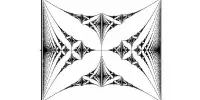For thousands of years, people have reported weird lights or other objects in the sky, some of which modern minds could refer to as unidentified flying objects (UFOs).
Between 223 and 91 BCE, Greek and Roman texts describe “sky fire”, “chasms”, and “night suns” in the sky. Looking at these testimonies, they nicely lined up with 11-year aurora cycles, which certainly explains what they saw. Other stories from 218 BCE to 65 CE include spherical shields (presumably bolides) and “flaming spears” blazing across the sky, as well as “ships” in the sky, maybe caused by a cloud or a mirage.
None of these tales, which are most likely about meteorites, birds, or other natural phenomena, mention aliens. So, did they consider the possibility of life on other worlds, and when did it first appear?

Atomism, the theory that the cosmos is formed of tiny, indivisible components swirling around and clumping together to form objects and worlds, was proposed by philosophers Leucippus and Democritus in the fifth century BCE. Democritus theorized that there was an unlimited number of planets because he felt there was a limitless supply of these atoms.
“It appears absurd that only one stalk should grow in a large field,” his student Metrodorus of Chios wrote, “and that only one world exists in an infinite space.”
As the Roman poet Lucretius subsequently phrased it, “Nothing in the universe is unique and alone; therefore, in other regions, there must be other earth inhabited by different tribes of men and breeds of beasts.”
While this may appear to be a fairly modern viewpoint, as amateur historian Tim O’Neill points out, Democritus lived before we learned the stars were other suns, and these “other earths” were not seen to inhabit the sky. They were instead beyond our world, much like parallel universes in more recent conceptions.
Aristotelian philosophy denied the concept of several realms, while religion suppressed any scientific concepts that did not portray God as anything other than all-powerful. Then, in 1439-40, Nicholas of Cusa wrote an influential treatise that used this concept.
“Life, as we know it on Earth in the form of men, animals, and plants, can be found in high concentrations in the solar and stellar regions.” Rather than believing that so many stars and parts of the heavens are uninhabited and that our planet is the only one that is inhabited – and that with beings of possibly inferior type – we will believe that in every region there are inhabitants, differing in nature by rank, and all owing their origin to God, who is the center and circumference of all stellar regions,” he wrote.
“Of the inhabitants of worlds other than our own, we can know nothing, and we have no standards by which to judge them.” It is possible that solar beings exist in the solar system, bright and enlightened inhabitants who are more spiritual by nature than those who live on the moon.















